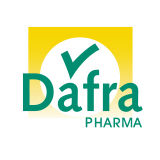预约演示
更新于:2025-05-07
DHFR x DHPS
更新于:2025-05-07
关联
9
项与 DHFR x DHPS 相关的药物作用机制 DHFR抑制剂 [+1] |
在研机构 |
原研机构 |
非在研适应症- |
最高研发阶段批准上市 |
首次获批国家/地区 中国 |
首次获批日期1994-01-01 |
作用机制 DHFR抑制剂 [+2] |
在研机构- |
原研机构- |
非在研适应症- |
最高研发阶段批准上市 |
首次获批国家/地区- |
首次获批日期1800-01-20 |
作用机制 ATP2A1抑制剂 [+3] |
在研机构 |
原研机构 |
在研适应症 |
最高研发阶段批准上市 |
首次获批国家/地区- |
首次获批日期1800-01-20 |
14
项与 DHFR x DHPS 相关的临床试验NCT03508921
Comparison of Methods for Prevention of Urinary Tract Infection Following Botox Injection: a Non-Inferiority Trial
Injection of OnabotulinumtoxinA (BTX-A) into the bladder is a widely used treatment option for patients with overactive bladder who have failed medical therapy. Urinary tract infection is the most common side effect of this procedure and therefore antibiotics are given around the time of injection in order to prevent these events. While antibiotics are commonly given at the time of injection, the duration of these antibiotic regimens are variable. The investigators propose a study to investigate different antibiotic protocols and their affect on the rate of urinary tract infection after injection.
开始日期2018-07-01 |
申办/合作机构 |
NCT00510159
Randomized Double Blind Clinical Trial in Mali, Comparing the Effectiveness of Artesunate + Sulfamethoxypyrazine/Pyrimethamine Versus Praziquantel in the Treatment of S. Haematobium in Children
The purpose of this study is to evaluate the efficacy of praziquantel versus As+SMP (Co-Arinate FDC ®) in the treatment of Schistosoma haematobium in 6-15 year old Malian children. The nul-hypothesis in this study is that the combination of As+SMP is more effective than praziquantel in the treatment of S. haematobium infected children.
开始日期2007-08-01 |
申办/合作机构 |
100 项与 DHFR x DHPS 相关的临床结果
登录后查看更多信息
100 项与 DHFR x DHPS 相关的转化医学
登录后查看更多信息
0 项与 DHFR x DHPS 相关的专利(医药)
登录后查看更多信息
455
项与 DHFR x DHPS 相关的文献(医药)2025-03-03·Journal of Antimicrobial Chemotherapy
Monitoring molecular markers associated with antimalarial drug resistance in south-east Senegal from 2021 to 2023
Article
作者: Hagadorn, Kelly ; Sadio, Bacary Djilocalisse ; Pouye, Mariama N ; Diallo, Fatoumata ; Vigan-Womas, Ines ; Platon, Lucien ; Amambua-Ngwa, Alfred ; Caspar, Emanuelle ; Ba, Aboubacar ; Sene, Seynabou D ; Fall, Magal ; Thiebaut, Lucas ; Guerra, Noemi ; Desamours, Ife ; Ménard, Didier ; Mbengue, Alassane ; Bei, Amy K ; Wade, Alioune ; Thiam, Laty Gaye
2025-01-01·IET Systems Biology
Transcriptomic analysis reveals pathways underlying the multi‐antibiotic resistance of Klebsiella pneumoniae
Article
作者: Liu, Ying ; Zhao, Jun ; Chen, Jun ; Yang, Dezhi ; Wu, Rile ; Niu, Zhihui ; Liu, Guoqing
2024-12-01·Journal of Parasitic Diseases
To quest new targets of Plasmodium parasite and their potential inhibitors to combat antimalarial drug resistance
Review
作者: Ghosh, Kuldip ; Nath, Debjani ; Biswas, Pratyusa ; Nandi, Sisir ; Samadder, Asmita ; Roy, Rini
分析
对领域进行一次全面的分析。
登录
或

生物医药百科问答
全新生物医药AI Agent 覆盖科研全链路,让突破性发现快人一步
立即开始免费试用!
智慧芽新药情报库是智慧芽专为生命科学人士构建的基于AI的创新药情报平台,助您全方位提升您的研发与决策效率。
立即开始数据试用!
智慧芽新药库数据也通过智慧芽数据服务平台,以API或者数据包形式对外开放,助您更加充分利用智慧芽新药情报信息。
生物序列数据库
生物药研发创新
免费使用
化学结构数据库
小分子化药研发创新
免费使用

